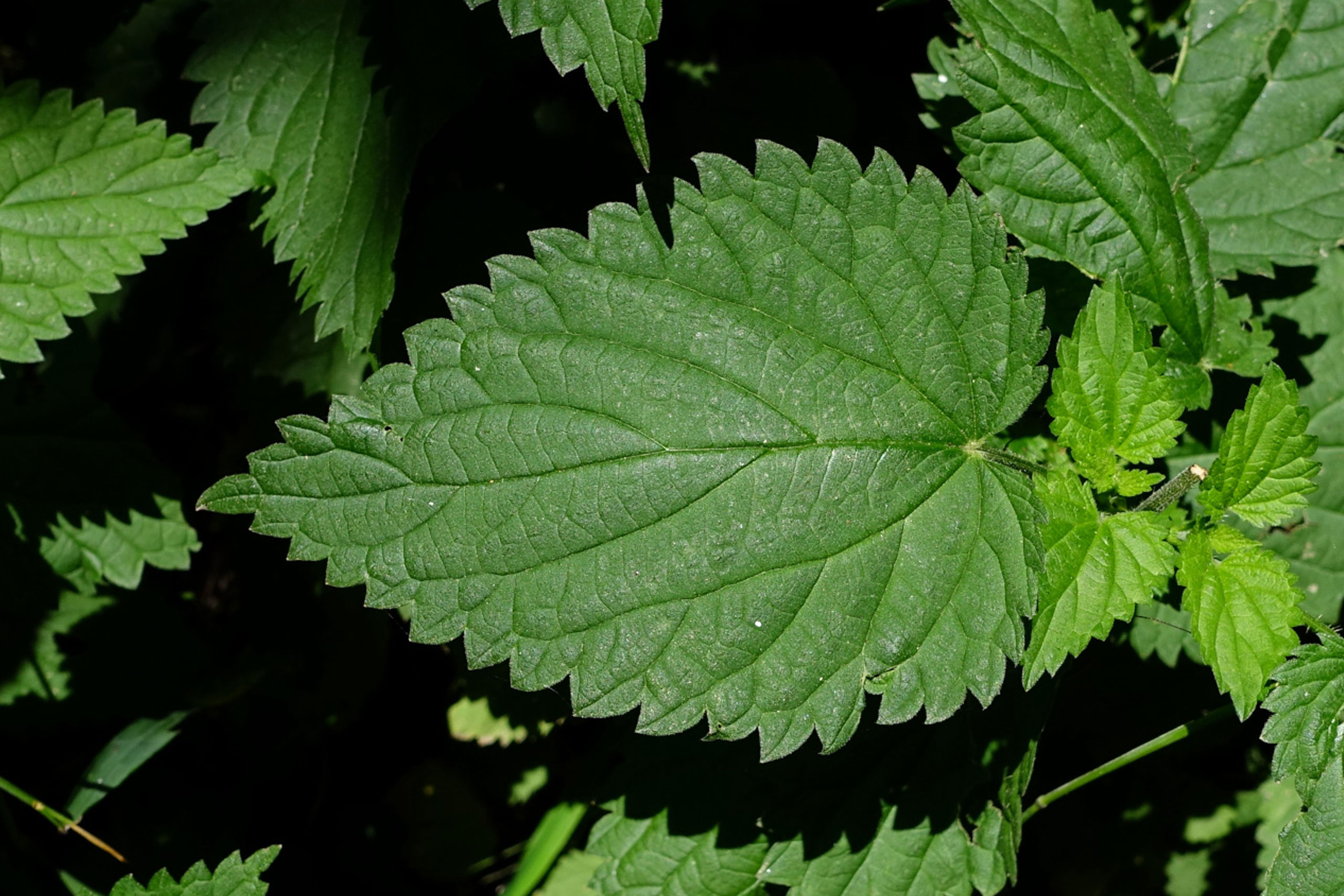Overview
Urtica dioica, commonly known as stinging nettle, is a highly nutritive and versatile herb. Long revered in traditional medicine, this humble plant offers powerful support for detoxification, inflammation, and vitality.
Common Name
Family
Genus
Species
Hardiness zone
Status

Parts Used

System Affinity

Preparation Method

Therapeutic Dosage

Tissue States

Energetics

Taste

Safety Class
Traditional Uses
Urtica dioica has a long and varied history of use across Europe, Asia, and North America, where it was traditionally regarded as both food and medicine. The leaf, seed, and root have each held distinct places in herbal practice, reflecting the plant’s deep affinity with blood, vitality, and elimination. In Western herbal traditions, the leaf has been used as a nutritive tonic rich in iron, calcium, magnesium, and chlorophyll—making it a mainstay for convalescence, anaemia, and general debility. Its diuretic and eliminative properties were widely employed to support fluid balance, clear metabolic waste, and relieve joint or skin conditions linked to “toxicity” or sluggish circulation (Dhakal et al., 2024; Parente et al., 2024).
The leaf was also traditionally used for allergic presentations such as hay fever, asthma, eczema, and urticaria, and was sometimes referred to as the “green vaccination” for its purported histamine-modulating effects (Parente et al., 2024). In addition to internal use, nettle leaf was applied externally for burns, bleeding, scurvy, and bruising—likely linked to its vitamin K and astringent constituents. Folk remedies even included the intentional use of the fresh plant to “sting” arthritic joints in a practice known as urtication, used to stimulate circulation and alleviate pain (Bhusal et al., 2022).
The seed of Urtica dioica, though less documented in older herbals, has become increasingly prominent in contemporary Western practice. Traditionally it was used to support resilience and restore vitality, particularly in states of burnout or adrenal depletion. Herbalists have also used the seed to nourish kidney function and support chronic exhaustion. Though less prevalent in historical texts, its antibacterial uses and rejuvenative potential were recognised by some traditions (Dhakal et al., 2024).
The root has been especially valued in European phytotherapy for its affinity with the lower urinary tract. It has been used in decoctions and tinctures to address symptoms of benign prostatic hyperplasia (BPH), including urinary retention, frequent urination, and pelvic congestion. The root’s ability to modulate inflammation and influence hormone-binding proteins made it a respected remedy for prostate and bladder health, often in combination with other genitourinary tonics (Alrhmoun et al., 2025; Parente et al., 2024).
Clinical Notes
Urtica dioica demonstrates a broad spectrum of clinical utility across the urinary, endocrine, reproductive, musculoskeletal, and immune systems, with pharmacological activity varying significantly depending on the plant part used.
Leaf
Traditionally valued for its nutritive and anti-inflammatory properties, nettle leaf is now supported by clinical evidence in addressing allergic rhinitis, eczema, osteoarthritis, and metabolic dysfunctions. It modulates key inflammatory mediators including TNF-α and IL-6, likely via NF-κB inhibition (Parente et al., 2024; Taheri et al., 2022). Leaf extracts have demonstrated significant antioxidant effects and mild diuretic action, with additional support for allergic rhinitis, asthma, and mild urinary complaints (Culhuac & Bello, 2024; Harrison et al., 2022).
Emerging evidence highlights potential roles in male reproductive health. In vitro research indicates that aqueous extracts contain P2-purinoceptor antagonists, which may impact sperm motility and fertilisation pathways (Eise et al., 2022).
Urtica dioica has also been used traditionally as a trophorestorative for the kidneys, and emerging research supports this application. In animal models, leaf extracts have demonstrated antioxidant, anti-inflammatory, and anti-fibrotic activity in renal tissue, modulating damage pathways even in the absence of NRF2 signalling—effects comparable to those of standard pharmaceutical interventions such as losartan (Vajić et al., 2024).
In broader pharmacological reviews, U. dioica is consistently listed among medicinal plants with nephroprotective effects, particularly in the context of drug-induced nephrotoxicity (Bisht et al., 2021). These findings offer scientific support for the plant’s traditional use in urinary tract and kidney-related conditions.
Root
The root of U. dioica is best known for its application in benign prostatic hyperplasia (BPH). Clinical trials have shown significant improvements in lower urinary tract symptoms (LUTS), International Prostate Symptom Scores (IPSS), and urinary flow with root extract use (Safarinejad et al., 2005). Meta-analyses confirm both efficacy and safety in mild to moderate BPH, with mechanisms including 5α-reductase inhibition, aromatase modulation, and reduced binding of SHBG to dihydrotestosterone (DHT) (Posadzki et al., 2025; Csikós, 2021). These effects contribute not only to symptomatic relief but may also address underlying hormonal drivers of prostate enlargement.
Seed
While traditionally used by herbalists to support adrenal resilience and chronic fatigue, research into U. dioica seed remains limited. However, preliminary animal studies suggest antioxidant, hepatoprotective, and antitumour effects (Keleş et al., 2024; Uyar et al., 2022). Though not yet formally classed as an adaptogen, its nutrient profile and emerging activity profile suggest potential in this category.
Across all plant parts, U. dioica demonstrates mild hypoglycaemic activity, immune modulation, and support for chronic inflammatory states, including musculoskeletal and autoimmune conditions (Taheri et al., 2022; Abd-Nikfarjam et al., 2022). Its broad safety profile and diverse clinical applications continue to justify its inclusion in daily tonics, topical formulations, and targeted therapeutic protocols.
Medicinal Actions

Nervous System

Endocrine & Hormonal System

Digestive System

Immune & inflammatory System

Reproductive System

Cardiovascular System

Respiratory System

Urinary System

Musculoskeletal & Tissue Repair

Metabolic & Regulatory

General / Systemic
Oncology Note
Urtica dioica is not considered a primary anticancer remedy; however, emerging evidence suggests potential adjunctive roles within integrative oncology, particularly for supportive care.
1. Bioactive Constituents & Antioxidant Support
The plant’s leaf and root contain flavonoids (e.g. quercetin, kaempferol), phenolic acids (e.g. caffeic and chlorogenic acids), and oxylipins. These compounds exhibit antioxidant, anti-inflammatory, and antiproliferative effects in vitro across multiple cancer cell lines—including prostate, breast, colon, lung, and ovarian models (Abi Sleiman et al., 2024; Esposito et al., 2019).
2. Mechanisms of Action (Pre‑clinical Evidence)
- Apoptosis induction: Extracts of U. dioica leaf and root triggered caspase-mediated apoptosis, G2/M cell cycle arrest, and downregulation of Bcl‑2 in breast and prostate cancer cell lines (Mohammadi et al., 2016; Esposito et al., 2019).
- Anti‑metastatic signaling: Complemented chemotherapy (e.g. paclitaxel), reduced migration-related gene expression (e.g. Snail‑1, MMPs) in breast cancer cells (Mohammadi et al., 2016).
- Potential hormone modulation: Root phytosterols and lignans may influence hormone balance relevant in hormone-sensitive cancers (e.g. prostate, estrogen-dominant breast cancer).
3. Immunomodulation & Nutritional Support
Lectin components (e.g. Urtica dioica agglutinine) have shown in vitro activation of B- and T-lymphocytes, contributing to innate immune vigilance—potentially valuable in oncology care (Wagner et al., 1994 cited in Esposito et al., 2019).
The nutritive leaf, rich in iron, chlorophyll, and minerals, can support anaemia, cachexia, and fatigue, common in cancer patients.
4. Clinical Application & Cautions
- Integrative use: Best suited as a supportive herb alongside conventional cancer treatments, rather than as a chemotherapeutic agent.
- Monitoring considerations: In oncology patients with diabetes, corticosteroid therapy, or cardiovascular disease, monitor blood glucose, fluid balance, and blood pressure due to Urtica’s hypoglycaemic, diuretic, and hypotensive effects.
- Contraindications: Owing to immunostimulant and diuretic properties, tailor use case-by-case—especially during chemotherapy when hydration and immune status may be delicate.
Contraindications
Allergy: Fresh plant may cause contact urticaria in sensitive individuals due to stinging hairs. Use dried or prepared forms topically with caution.
Blood sugar regulation: Leaf may lower blood glucose; monitor closely if using alongside insulin or hypoglycaemic drugs.
Electrolyte balance: Diuretic effect may increase urination; monitor for dehydration or electrolyte loss, especially when combined with diuretics.
Iron deficiency anaemia: Leaf contains tannins which may inhibit non-heme iron absorption. Avoid concurrent intake with iron-rich meals or supplements.
Pregnancy and breastfeeding: Leaf may be used in moderation under supervision, but root and seed should be avoided due to lack of safety data.
Renal impairment: Use seed with caution in individuals with compromised kidney function due to limited clinical data.
Undiagnosed urinary symptoms: Root is contraindicated in men with lower urinary tract symptoms unless BPH has been clinically confirmed.
Drug interactions:
- Antidiabetics – potential additive hypoglycaemic effect
- Anticoagulants / antiplatelets – root may enhance bleeding risk; leaf’s vitamin K content may reduce warfarin efficacy
- Antihypertensives / diuretics – additive hypotensive or fluid loss effects
Therapeutic Indications

Nervous System

Endocrine & Hormonal System

Digestive System

Immune System

Reproductive & Sexual Health

Cardiovascular System

Respiratory System

Urinary System

Musculoskeletal System

Skin Wound & External

Pscyhological, Emotional & Energetic

Constitutional System & Multi System
Phytochemistry
- Polyphenols
Flavonoids: Quercetin, rutin, luteolin, kaempferol
→ Potent antioxidants; modulate inflammation, support vascular and immune health
→ Quercetin and rutin contribute to capillary integrity and histamine modulation
Phenolic Acids: Caffeoylmalic acid, chlorogenic acid, ferulic acid
→ Contribute to antioxidant and anti-inflammatory actions; support hepatic detoxification
- Lignans & Coumarins
Lignans: Secoisolariciresinol, dehydrodiconiferyl alcohol
→ Exhibit hormonal modulation and antioxidant effects; particularly noted in root
Coumarins: Scopoletin
→ Anti-inflammatory and hepatoprotective; may modulate smooth muscle tone - Sterols
Phytosterols: β-sitosterol, stigmasterol, campesterol
→ Inhibit SHBG binding and aromatase activity; relevant to prostate health and BPH support - Tannins
Hydrolysable and condensed tannins
→ Astringent; support mucosal tone and have mild antimicrobial effects; may reduce iron absorption when consumed in high amounts - Amines & Neuroactives
Histamine, Acetylcholine, Serotonin (in trichomes)
→ Contribute to urticating/stinging effects; modulate inflammation and vascular permeability - Fatty Acids & Lignanamides (Primarily in seed)
Essential fatty acids: Linoleic acid, α-linolenic acid
→ Anti-inflammatory; contribute to cellular repair and adrenal support
Lignanamides: Emerging class under study; may possess adaptogenic and anti-tumour properties - Vitamins & Minerals
→ Rich in vitamins A, C, K, and several B vitamins (B1, B2, B5, B9)
→ High in minerals such as calcium, magnesium, potassium, iron, silica, and zinc
→ Supports connective tissue, blood health, and general nutritional status - Chlorophyll & Pigments
Chlorophyll
→ Detoxifying and alkalinising; supports wound healing and blood building
Carotenoids: β-carotene, lutein
→ Antioxidant and eye-protective; contribute to the plant’s deep green pigment
Pharmacokinetics & Related Drugs
CMAX / TMAX:
Peak plasma concentrations for water-soluble constituents such as chlorogenic acid and rutin are typically reached within 1–2 hours post-ingestion. Bioavailability of flavonoids is enhanced when taken with food containing fats or in alcohol-based extracts. Fatty acids and phytosterols from the seed and root are more slowly absorbed and may require emulsification for optimal uptake.
Excretion:
Phenolic compounds and flavonoids are primarily metabolised in the liver and excreted renally. Lipophilic sterols and lignans are excreted via the bile and faeces. The herb’s mild diuretic effect may increase renal clearance of certain compounds.
CYP450 Interactions:
- CYP3A4: Mild inhibitor – may slow metabolism of drugs such as statins, calcium channel blockers, or benzodiazepines (in vitro evidence; clinical relevance not confirmed).
- CYP2C9: Possible weak inhibitor – exercise caution with warfarin, phenytoin, and NSAIDs.
- CYP1A2: No significant modulation currently reported.
Other Pathways:
- Inhibits P-glycoprotein (P-gp): Mild inhibition observed in vitro; may affect absorption of drugs like digoxin and certain chemotherapeutics.
- No known inhibition of COMT or catecholamine metabolism at this time.
Conventional Analogues:
Phytosterols in the root share structural similarity with cholesterol-lowering agents and may exhibit mild 5α-reductase inhibition, akin to finasteride. Flavonoids such as quercetin modulate inflammation and vascular tone in ways comparable to some NSAIDs or antihistamines.
References
Abi Sleiman, M., Younes, M., Hajj, R., et al. (2024). Urtica dioica: anticancer properties and other systemic health benefits from in vitro to clinical trials. International Journal of Molecular Sciences, 25(13), 7501.
Alaboo, H. A., & Mohammed, M. J. (2023). Phytochemical, antioxidant and anti-cancer properties of Urtica dioica. International Journal of Chemical and Biochemical Sciences, 23(3), 134–147.
Bisht, D., Prakash, D., & Shakya, A. K. (2021). A review of medicinal plants against drug-induced nephrotoxicity. Research & Reviews: A Journal of Pharmaceutical Science, 12(1), 27–49.
Csikós, E., Horváth, A., Ács, K., Papp, N., Balázs, V. L., Dolenc, M. S., … & Farkas, Á. (2021). Treatment of benign prostatic hyperplasia by natural drugs. Molecules, 26(23), 7141.
Culhuac, E. B., & Bello, M. (2024). Evaluation of Urtica dioica phytochemicals against therapeutic targets of allergic rhinitis using computational studies. Molecules, 29(8), 1765.
Devkota, H. P., Paudel, K. R., Khanal, S., Baral, A., Panth, N., Adhikari-Devkota, A., … & Hansbro, P. M. (2022). Stinging nettle (Urtica dioica L.): Nutritional composition, bioactive compounds, and food functional properties. Molecules, 27(16), 5219.
Eise, N. T., Simpson, J. S., Thompson, P. E., & Ventura, S. (2022). Aqueous extracts of Urtica dioica (stinging nettle) leaf contain a P2-purinoceptor antagonist—Implications for male fertility. PLOS ONE, 17(7), e0271735.
El Kahkahi, R., Moustaine, M., & Zouhair, R. (2025). Urtica dioica L.: A Comprehensive Review of its Phytochemical Composition and Pharmacological Properties. Medical and Pharmaceutical Journal, 4(2), 64–78.
Esposito, S., et al. (2019). Therapeutic perspectives of molecules from Urtica dioica extracts for cancer treatment. Frontiers in Immunology/PMC review.
Harrison, F., Furner-Pardoe, J., & Connelly, E. (2022). An assessment of the evidence for antibacterial activity of stinging nettle (Urtica dioica) extracts. Access Microbiology, 4(3), 000336.
Keleş, Ö., Huyut, Z., Arslan, M., Yıldızhan, K., & Yener, Z. (2024). Antitumor activity of Urtica dioica seed extract on diethylnitrosamine-induced liver carcinogenesis in rats. Indian Journal of Biochemistry and Biophysics (IJBB), 61(1).
Majedi, S., Faraj, T. A., Ahmed, J. H., & Hussain, F. H. S. (2021). A review of biochemical structures of Urtica dioica metabolites and their pharmaceutical effects. Chemical Review and Letters.
Parente, R., Paiva-Santos, A. C., Cabral, C., & Costa, G. (2024). Comprehensive review of Urtica dioica L. (Urticaceae) phytochemistry and anti-inflammatory properties. Phytochemistry Reviews, 1–38.
Posadzki, P., Kongkaew, C., & Ernst, E. (2025). Urtica dioica for benign prostatic hyperplasia. Journal of Herbal Medicine, 100996.
Safarinejad, M. R. (2005). Urtica dioica for treatment of benign prostatic hyperplasia: A prospective, randomized, double-blind, placebo-controlled, crossover study. The Journal of Herbal Pharmacotherapy, 5(4), 1–11.
Taheri, Y., Quispe, C., Herrera-Bravo, J., Sharifi-Rad, J., Ezzat, S. M., Merghany, R. M., … & Cho, W. C. (2022). Urtica dioica-derived phytochemicals for pharmacological and therapeutic applications. Evidence-Based Complementary and Alternative Medicine, 2022(1), 4024331.
Uyar, A., Doğan, A., Yaman, T., Keleş, Ö. F., Yener, Z., Çelik, İ., & Alkan, E. E. (2022). The protective role of Urtica dioica seed extract against azoxymethane-induced colon carcinogenesis in rats. Nutrition and Cancer, 74(1), 306–319.
Vajić, U. J., Mihailović-Stanojević, N., Karanović, D., Životić, M., Ivanov, M., Jovović, D., … & Miloradović, Z. (2024). Urtica dioica L. leaf extract dose-dependently modulates oxidative stress in the kidney and exerts anti-fibrotic and anti-inflammatory properties by molecular mechanisms independent of NRF-2 signalization mirroring the effects of losartan in SHR. International Journal of Molecular Sciences, 25(24), 13272.
Wójciak-Borowska, K., et al. (2024). Antioxidant and anti-inflammatory effects of nettle polyphenolic fraction: anti‑tumoral support without cytotoxicity to normal cells. Molecules, 29(21), 5000

